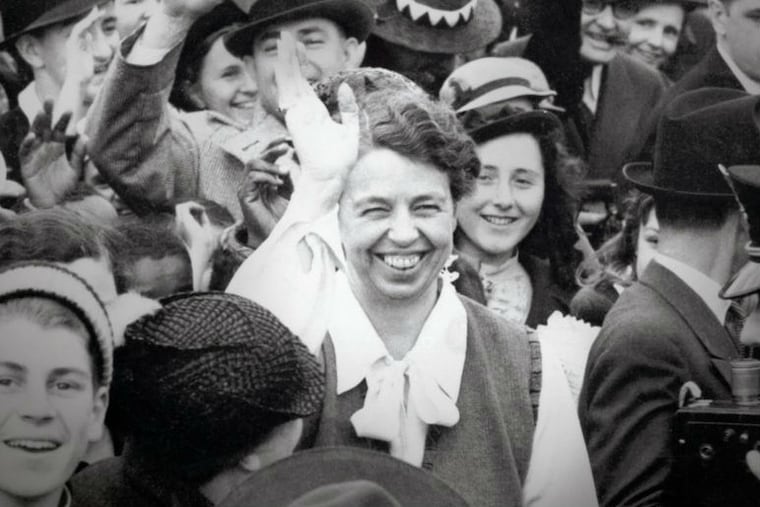'Eleanor Roosevelt, Vol. Three': Disappointing end to a promising bio
Eleanor Roosevelt got the fully fleshed portrait she deserved in the first volume of Blanche Wiesen Cook's biography. There, Cook told the compelling story of a shy, lonely rich girl who found her self-esteem and her mission in a community of progressive women whose battles for social and political reform laid the groundwork for Franklin Roosevelt's New Deal.

Eleanor Roosevelt
Volume Three: The War Years and After, 1939-1962
By Blanche Wiesen Cook Viking. 670 pp. $40
nolead ends nolead begins
Reviewed by Wendy Smith
nolead ends Eleanor Roosevelt got the fully fleshed portrait she deserved in the first volume of Blanche Wiesen Cook's biography. There, Cook told the compelling story of a shy, lonely rich girl who found her self-esteem and her mission in a community of progressive women whose battles for social and political reform laid the groundwork for Franklin Roosevelt's New Deal.
Cook lost her focus in the second volume, and, unfortunately, Volume Three is even more undisciplined. No question Cook admires ER - as she is called throughout - and shares her political convictions, but this account of her wartime efforts on behalf of liberal democracy would have had more impact in a better-proportioned book.
For example, a particular Florida vacation gets more space than Roosevelt's resignation from the Daughters of the American Revolution after the organization refused to allow Marian Anderson to sing at Constitution Hall. Excessive coverage of ER's involvement with the American Youth Congress, which pushed for an expanded jobs program and student aid, blunts four cogent paragraphs capturing her support of members of that group hauled in front of a subversive-hunting committee in Congress.
Even Cook's assessment of the Roosevelts' fraught marriage seems tired. We don't need to be reminded every time Eleanor pushes FDR to broaden the New Deal that she was the agitator and he the politician. We understand: She annoyed him with her persistence, and he disappointed her with his caution. Cook's dislike of FDR - glib, calculating, secretive where his wife was sincere, honest, and occasionally maladroit - is obvious. Cook details FDR's frustrating inaction on fair treatment for African American soldiers and rescue for Jews desperately seeking to escape Nazi-dominated Europe. Eleanor fought against such moral cowardice her whole life. She understood FDR's need to test the political climate before he took the strong stands she urged, but that would never be her way.
After his death in 1945, she was free to advocate more openly for full civil rights for African Americans in the United States and equality for women around the world. She served on the U.S. delegation to the United Nations' first assembly and helped write the Universal Declaration of Human Rights. She worked tirelessly for such causes until her death in 1962. Those final 17 years get exactly 30 pages in Cook's text. It's hard to resist the conclusion that she simply ran out of steam. This bloated yet truncated volume brings to a disheartening close a work of groundbreaking scholarship launched with such promise in 1992.
This review originally appeared in Newsday.